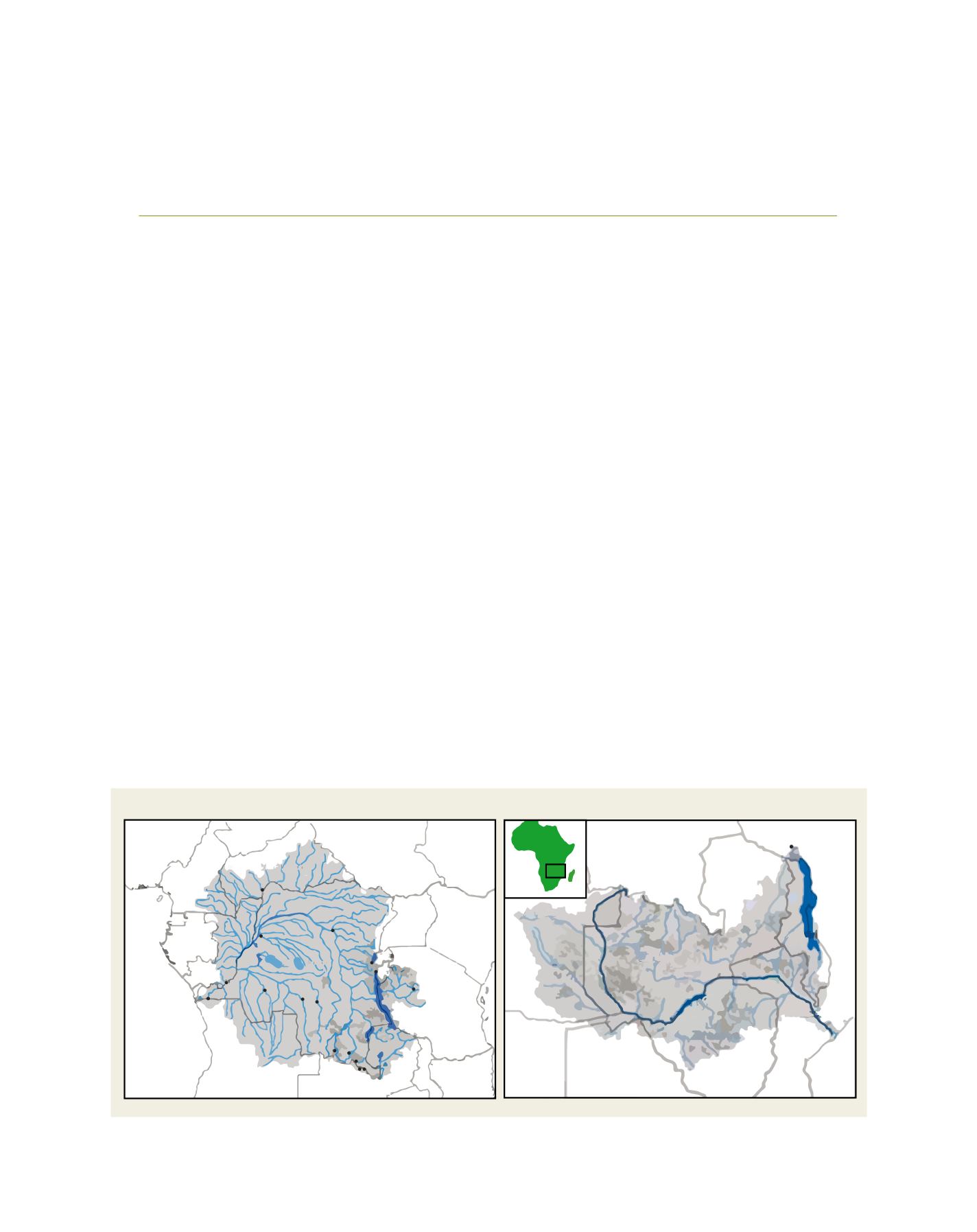

[
] 92
Transboundary water management in the Zambezi
and Congo river basins: a situation analysis
Ngosa Howard Mpamba, Assistant Director, Water Resources Management and Christopher Chileshe, Director,
Ministry of Mines, Energy and Water Development, Department of Water Affairs, Zambia
T
he Republic of Zambia lies entirely within two of Africa’s
major transboundary river basins, the Zambezi River
Basin and the Congo River Basin. Zambia is also the
source of these two internationally important river systems. The
Zambezi basin is shared by eight countries, while 10 countries
share the Congo basin, underlining the importance of trans-
boundary water management in the region.
The Zambezi River Basin is shared by countries such as Zambia,
Angola, Namibia, Zimbabwe, Mozambique, Malawi and Tanzania.
It has more than 40 million inhabitants and covers an area of 1.39
million km
2
. The river flows into the Indian Ocean after traversing
a distance of 2,574 km from a source located in the north-western
part of Zambia.
The Congo River Basin is shared by countries such as Zambia,
the Democratic Republic of the Congo, Angola, Burundi,
Cameroon, the Central African Republic, Republic of the Congo,
Rwanda and Tanzania. It covers an area of just over 4 million
km
2
. The Congo river crosses a distance of 4,700 km from its
source in the north-eastern part of Zambia before flowing into
the Atlantic Ocean.
According to the water resources master plan for Zambia, 75
per cent of the country’s territory is in the Zambezi River Basin
and 25 per cent in the Congo River Basin. Within
the boundaries of Zambia, the Zambezi River Basin
comprises three major river systems: the upper
main Zambezi, Kafue and Luangwa. The Congo
River Basin comprises two major river systems,
namely the Chambeshi-Luapula and Tanganyika.
The Chambeshi river whose source is in the north-
eastern part of Zambia, and the Zambezi River whose
source is in the north-western part of Zambia, are
generally considered the source of the Zambezi and
Congo rivers respectively. This is in line with the
worldwide acceptable hydrological practice of using
the longest tributary to define the source of a river.
The internally-generated renewable water resources
in Zambia are estimated at 100 km
3
of surface water
and 49.6 km
3
of groundwater, and represent 8,700
m
3
per person per year. The Kafue river system has
the highest population distribution followed by the
Zambezi river system, with the Luangwa river system
ranking third.
A situation analysis will outline Zambia’s prepar-
edness and participation in transboundary water
management. This is based on the national legal
T
ransboundary
W
ater
M
anagement
The Congo and Zambezi river basins
Dem. Rep. Congo
Tanzania
Mozambique
Malawi
Zambia
Angola
Atlantic
Ocean
Rep.
Congo
Gabon
Eq. Guinea
Cameroon
Nigeria
Chad
Central African Republic
Sudan
Ethiopia
Kenya
Uganda
Rwanda
Burundi
Tanzania
Malawi
Mozambique
Indian
Ocean
Zimbabwe
Zambezi River
Zambia
Botswana
Namibia
Angola
Source: World Water Congress, 2008, SADC, 1995 & Phiri, 2007


















